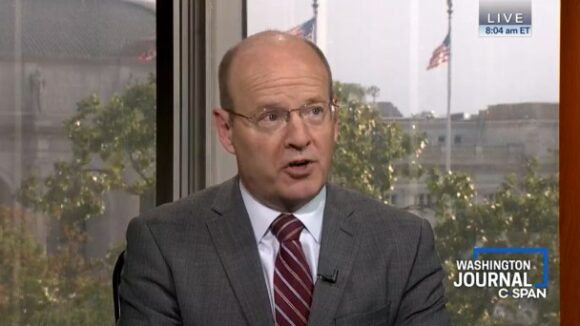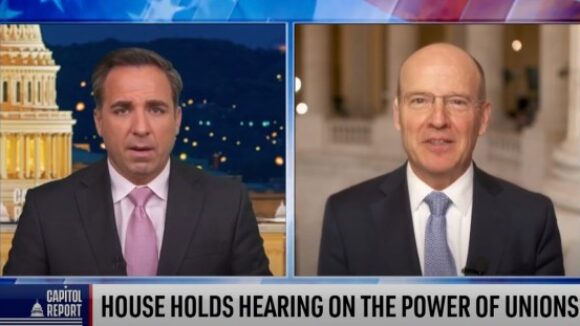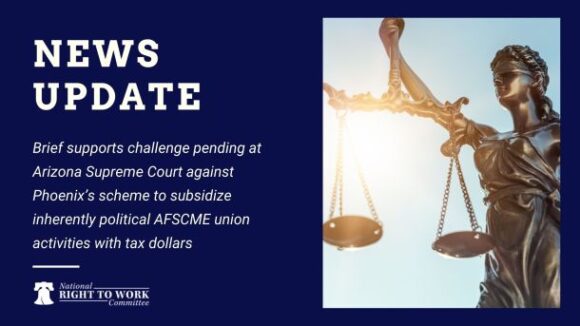Radical Union Is Hemorrhaging Members
As president of the National Right to Work Legal Defense Foundation as well as the Committee, Mark Mix is overseeing judicial…

Even as the union political machine suffered a series of setbacks from 2010 through early this year, including, but not lEven as the union political machine suffered a series of setbacks from 2010 through early this year, including, but not limited to, the loss of operational control over both chambers of the U.S. Congress and dozens of state legislative chambers as well as the passage of new Right to Work laws in four states, the union hierarchy continued to wield power at its White House bastion in Washington, D.C.
Right up until late in the evening of November 8, union operatives were apparently confident that, whatever else happened, they would keep their lock-grip over the executive branch of the U.S. government during the next presidential administration.
But they were wrong. After the votes came in, avowed Right to Work supporters Donald Trump and Mike Pence had defeated compulsory-unionism cheerleaders Hillary Clinton and Tim Kaine in the contest to become the next U.S. President and Vice President.
There is no doubt that the Clinton defeat, combined with the union political machine’s failure to recapture operational control over either chamber of Congress this year, is a serious blow to Big Labor. But just how serious depends on whether President-elect Trump keeps his campaign promises to support Right to Work across the board once he takes office. And an extraordinarily important opportunity to keep his word will arrive immediately after he moves into the Oval Office.
During his first weeks as President, Mr. Trump could potentially use his court appointment powers to put a halt to an ongoing judicial scheme that has threatened to nullify every state law prohibiting forced union dues and fees.
International Union of Operating Engineers (IUOE) Local 370 v. Wasden and IUOE Locals 139 and 420 v. Schimel, two federal law suits now moving, respectively, through the 9th and 7th federal circuits, are Big Labor’s vehicle to eviscerate all 26 Right to Work laws through judicial activism. Both cases target workplaces where Big Labor is empowered to represent all front-line employees, including union members and nonmembers alike, throughout all negotiations with the employer on all matters concerning terms of employment.
The lawsuits claim union officials in such workplaces have a constitutional right to seize forced fees from nonmembers on pain of termination if they refuse.
This fall, district judges in Idaho and Wisconsin rejected this outrageous claim. Both judges correctly pointed out that Big Labor’s judicial attack on Right to Work conflicts with multiple federal court precedents. But union lawyers are appealing both cases.
Union lawyers’ declaration of their intent to appeal the Gem State case is particularly notable, because it was made on November 18, a week and a half after the Trump-Pence ticket won the 2016 presidential election by a decisive 306-to-232 electoral vote margin.
When IUOE Local 370 and IUOE Locals 139 and 420 were launched, union strategists knew there were four members of the U.S. Supreme Court — Justices Breyer, Ginsburg, Kagan and Sotomayor — who appeared to be predisposed to ruling in favor expanded monopoly privileges for the union hierarchy. At that time, they calculated that, if just one more reflexively anti-Right to Work justice was appointed before their cases came before the High Court, they could prevail.
Once Justice Antonin Scalia passed away in February 2016, it seemed this audacious strategy might pay off. After all, activist judges do not necessarily pay heed to judicial precedents, simple logic, or even, unfortunately, common sense.
But now it turns out that the vacancy on the Supreme Court will be filled not by an Obama appointee or a Clinton appointee, but rather by a Trump appointee. What kind of justice can he be expected to appoint?
In February, when he was embroiled in a turbulent contest for the GOP presidential nomination, Mr. Trump heeded the persistent pleas of National Right to Work Committee members and supporters who were then contacting his campaign by pledging he would support Right to Work 100% if elected.
Moreover, during the final presidential debate on October 19, Mr. Trump pledged that, as the nation’s chief executive, he would appoint Supreme Court justices who “interpret the Constitution the way the founders wanted it interpreted.”
Based on his avowed support for Right to Work and avowed opposition to creative “reinterpretations” of the Constitution to serve the varied political agendas of our era, Committee members and supporters have reason to be optimistic Mr. Trump will not pick High Court or other federal judges who think forced unionism is constitutionally mandated.
And since there are already four Supreme Court members — Justices Alito, Kennedy, Roberts and Thomas — who have shown themselves to be reluctant to go along with union lawyers’ far-fetched constitutional arguments, the first Trump appointment could, at least for now, ax cases like IUOE Local 370 and IUOE Locals 139 and 420.
Of course, any Supreme Court nominee who resists activist notions like Big Labor lawyers’ contention that the Fifth Amendment’s “Takings” Clause prohibits Right to Work laws will certainly meet with fierce opposition from union-label senators when he or she comes up for confirmation.
The fact that union lawyers are apparently planning on moving full speed ahead with their bid to gut Right to Work laws in the 9th Circuit and, ultimately, nationwide despite the November 8 election results suggests that Big Labor still may be holding out hope for a fifth pro-forced unionism justice on the Supreme Court.
But Committee officers, members and supporters are determined not to let that happen. In the weeks ahead, they will publicly insist again and again that the incoming President keep his campaign promises by nominating a jurist to fill the current Supreme Court vacancy who respects the Constitution and the authority of lawmakers to protect employees from forced unionism.

As president of the National Right to Work Legal Defense Foundation as well as the Committee, Mark Mix is overseeing judicial…

Watch as Mark Mix Joins NTD News Live from the Capitol Rotunda

Brief supports challenge pending at Arizona Supreme Court against Phoenix’s scheme to subsidize inherently political AFSCME union activities with tax dollars